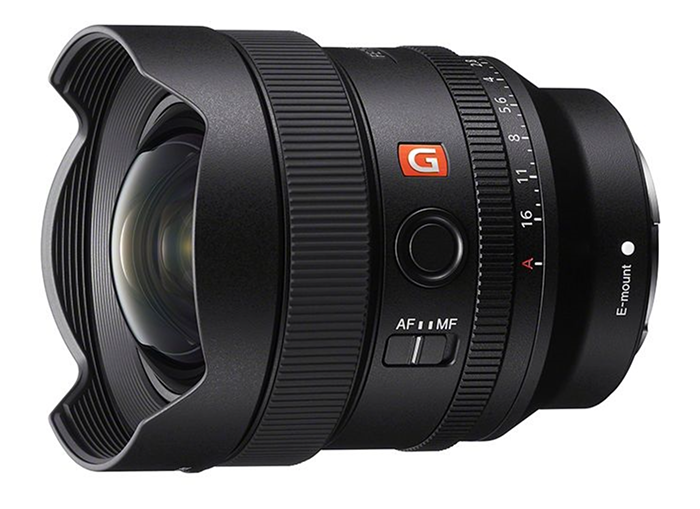Why the Sony 14mm F1.8 G Master Seems Pretty Amazing

The new Sony 14mm f1.8 G Master lens is indeed real, and we’re pretty excited about it.
In a meeting with the press, Sony compared their lens to Sigma’s. Mind you, the Sigma 14mm f1.8 DG Art is designed for DSLR cameras. But the Sony 14mm f1.8 G Master is designed for mirrorless through and through. When Sony comes out with prime lenses, I’m usually lukewarm. I liked what Reviews Editor Hillary Grigonis did with the 35mm f1.4 G Master. But the Sony 50mm f1.2 G Master left me thinking they went too far. With the Sony 14mm f1.8 G Master, I’m pleasantly surprised. Sony has made a lightweight lens that wasn’t really possible before. If Sigma made it, it would have been enormous.
During the meeting, I asked about the filter possibilities. The Sony 14mm f1.8 G Master has a rear filter slot. That’s standard in some ways. But some manufacturers have created new lens hoods that let you attach a filter to the front. And I wonder why Sony couldn’t have done that. The other day, I took a wide-angle lens to the beach to do seascapes. Filters on the front can help immensely, especially with protection. Why Sony didn’t do it is a bit odd. But this wouldn’t be the first time that Sony has done something weird.
Let’s get back to why this lens seems really amazing:
- It’s small. It’s much smaller than the Sigma variant.
- It’s lightweight. Sony showed a video of the Sigma variant and the Sony variant. If you’ve ever put a Sigma lens on a camera and then on a tripod, then you may encounter a problem. Unless you have a super-strong ball head, chances are the lens will shift the head forward. It’s a serious issue that has caused us a lot of problems before. And if you want something lighter, you need to go with Sigma’s Contemporary lenses, but those aren’t truly weather sealed.
- It’s targeted at interior shooters.
- Sony actually did portraiture with it. And the photos were pretty fun. Distortion was well controlled. I love using wide-angles for stuff like skating. In fact, I wish Sony had a true fisheye again.
- The Sony 14mm f1.8 G Master is weather sealed. Sony’s lenses have typically been well sealed, but I wonder how sealed this is. Sony’s camera bodies have traditionally not been well weather sealed. But the Sony a1 fixes that issue with the shutter that covers the sensor. This is something Canon has done for years.
- It boasts nine aperture blades which is unlike every G Master. And Sony actually seems to really care about those who will try to get bokeh.
- Sony did a whole part of the presentation about autofocus. But this is a wide-angle lens, so the autofocus isn’t difficult.
The good thing is really about both the size and the weight. Many camera companies seem to be making bigger and heavier lenses. But Sony isn’t trying to do that. And that’s super important. If there’s a genuinely good reason to make a lens big and heavy, then so be it. However, some just really don’t need to big! Canon found ways to make telephoto lenses lighter. And overall, their products don’t feel incredibly heavy when you consider their innovation. The L Mount has some massive and heavy lenses.
This Sony 14mm f1.8 G Master is a huge step forward, though. And honestly, I hope more manufacturers follow that path.
More specs on the Sony 14mm f1.8 G Master
- 99.8mm tall x 83mm wide
- 16.3 oz
- Rear filter slot
- Aperture control, De-click for aperture, AF/MF on the lens
- Dust and moisture resistant
- Not 11 aperture blades, it’s 9 aperture blades.
- 11 groups 14 elements
- Minimum focusing of 9.8 inches
- Fluorine coated front lens element. Nano AR coating II. This is probably why it’s 9 aperture blades.
- 2 XA elements
- 1 aspherical lens element
- 2 ELD lenses
- Super ELD
- $1,599.99